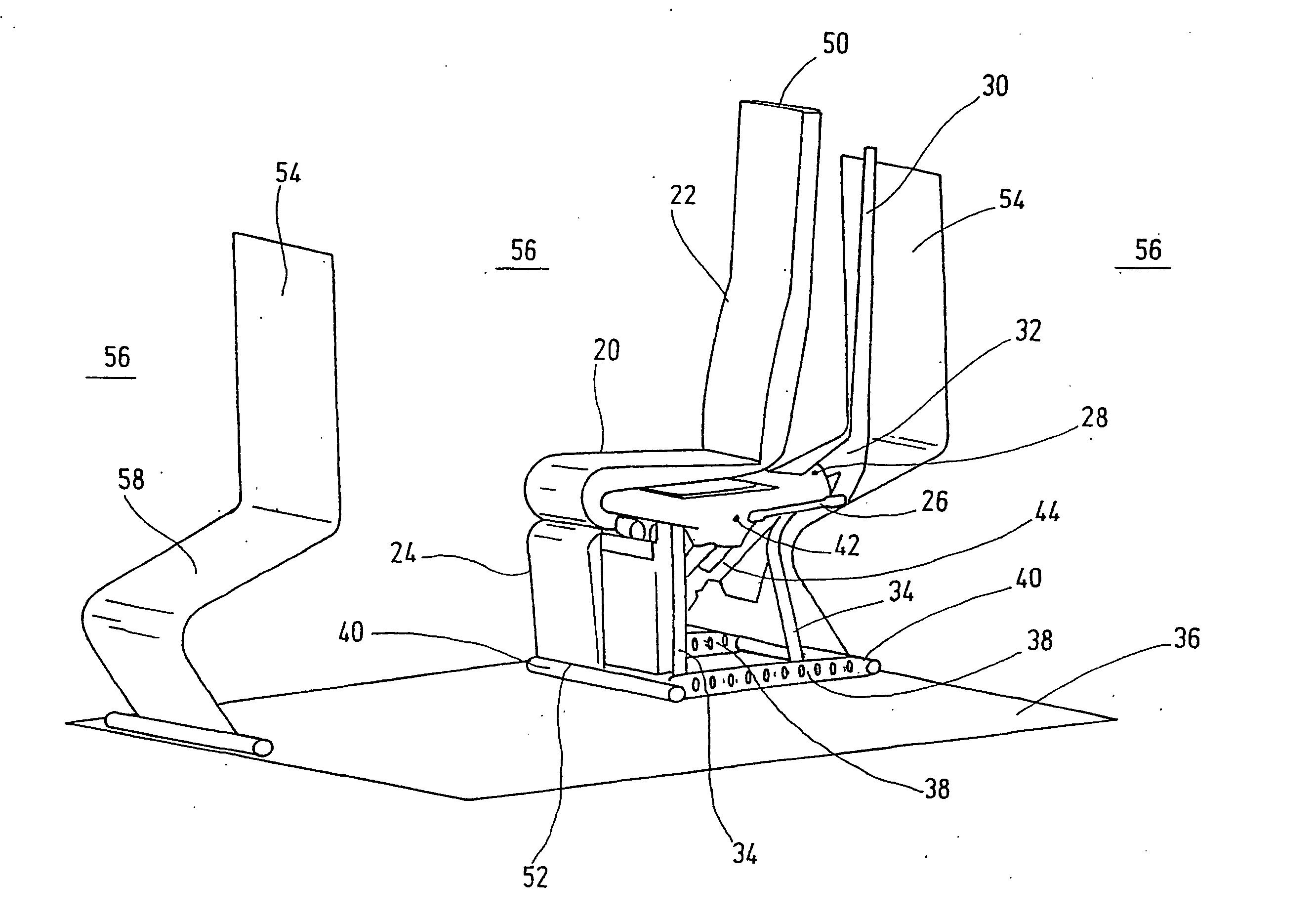Vehicle seat with seating components adjustable within a spatial constraint
a technology of vehicle seat and seat component, applied in the field of seats, can solve the problems of seating space constraints, avoid the possibility of seat placement, increase ergonomic requirements, and avoid damage to the sea
- Summary
- Abstract
- Description
- Claims
- Application Information
AI Technical Summary
Benefits of technology
Problems solved by technology
Method used
Image
Examples
Embodiment Construction
[0018]FIG. 1 shows an aircraft passenger seat in the upright position. These aircraft passenger seats with the corresponding level of outfitting are often found in the first class compartment of airliners. The illustrated aircraft passenger seat as shown in FIG. 1, is preferably a component of a compartment. The seat can fundamentally also be used in an arrangement next to another seat repeatedly in a row in business class for a conventional multiseat arrangement. The aircraft passenger seat is composed of individual seat components, such as a seat part 20, a backrest 22 and a leg rest 24. For greater clarity, in addition the cushion support for each seat components is shown only partially, so that the underlying aircraft passenger seat parts are at least partially visible. The backrest 22 is positioned to be able to swivel around an articulation point 28 by a first actuation means 26, partially shown inclined relative to the seat part 20 extending essentially horizontally in the in...
PUM
 Login to View More
Login to View More Abstract
Description
Claims
Application Information
 Login to View More
Login to View More - R&D
- Intellectual Property
- Life Sciences
- Materials
- Tech Scout
- Unparalleled Data Quality
- Higher Quality Content
- 60% Fewer Hallucinations
Browse by: Latest US Patents, China's latest patents, Technical Efficacy Thesaurus, Application Domain, Technology Topic, Popular Technical Reports.
© 2025 PatSnap. All rights reserved.Legal|Privacy policy|Modern Slavery Act Transparency Statement|Sitemap|About US| Contact US: help@patsnap.com



